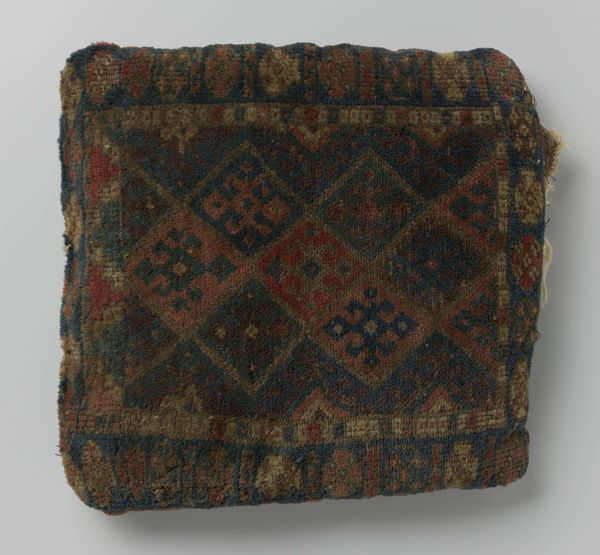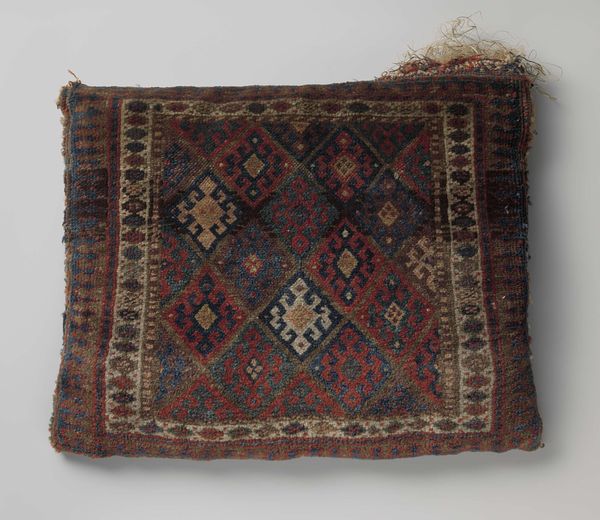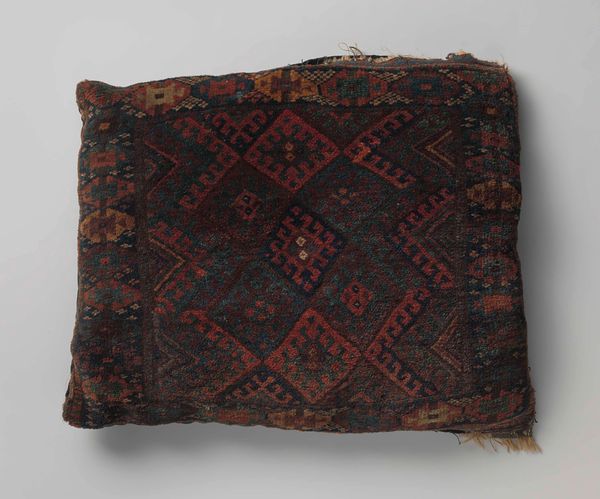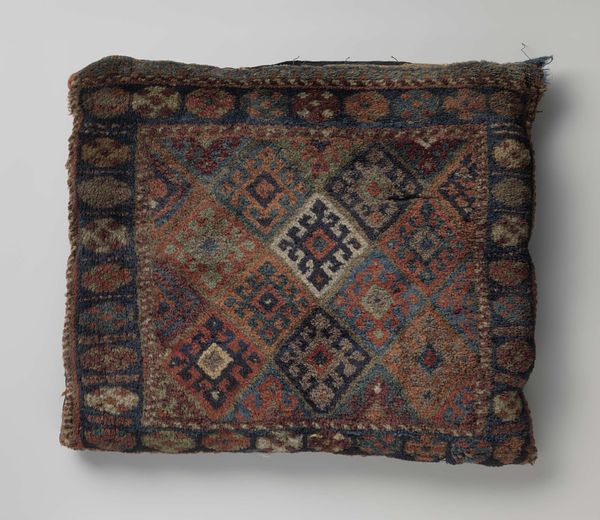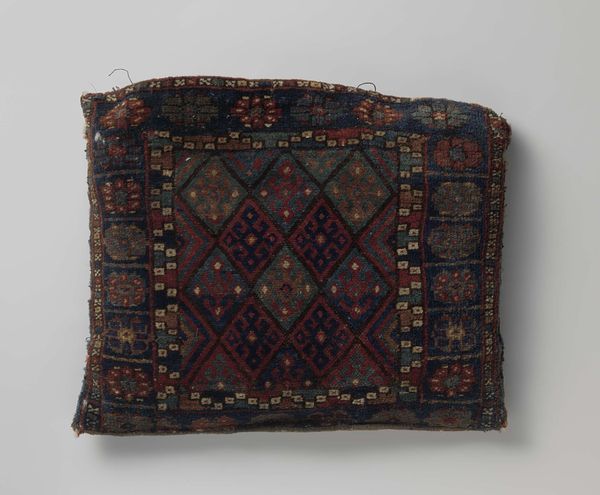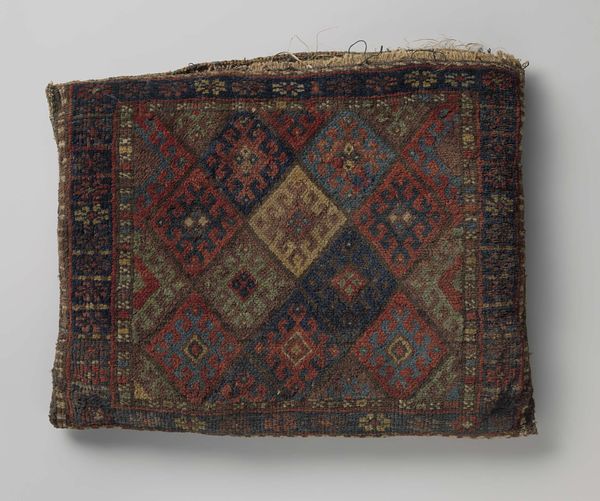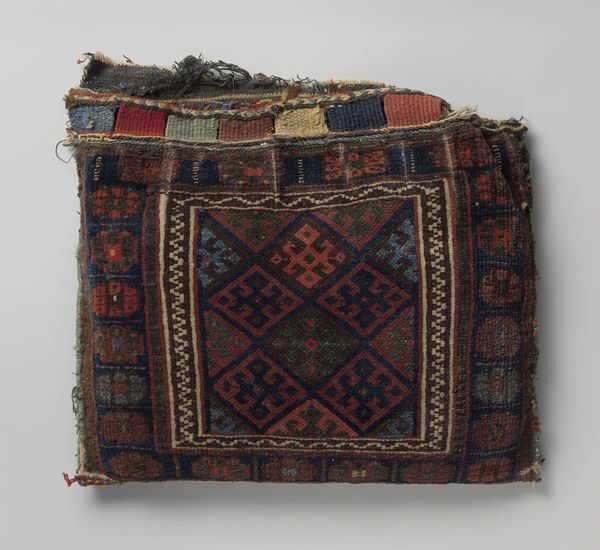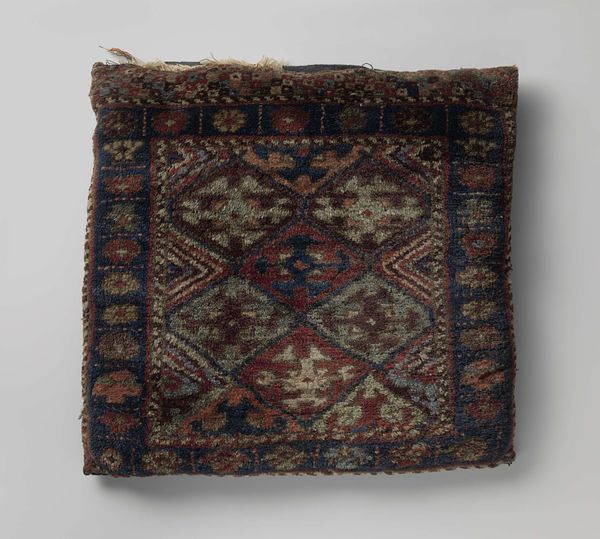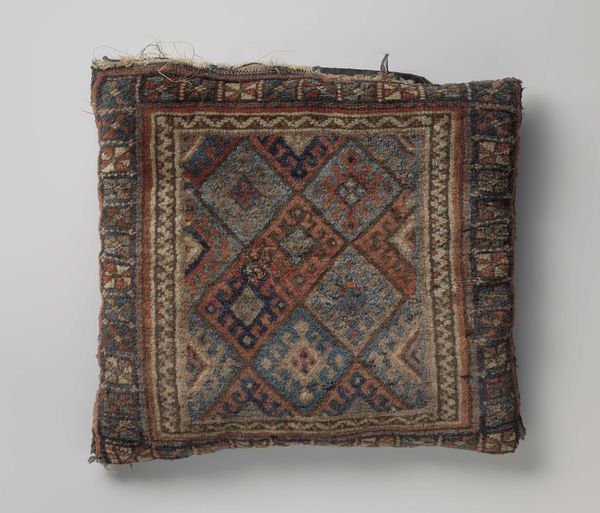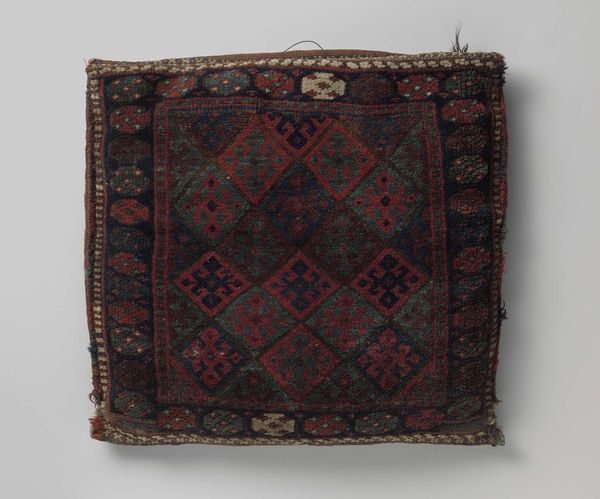
weaving, textile
#
pattern heavy
#
natural stone pattern
#
weaving
#
textile
#
fashion and textile design
#
hand-embroidered
#
repetitive shape and pattern
#
geometric
#
fabric design
#
repetition of pattern
#
regular pattern
#
pattern repetition
#
decorative-art
#
layered pattern
Dimensions: height 45.0 cm, width 60.0 cm, depth 14 cm
Copyright: Rijks Museum: Open Domain
Curator: Let's delve into this woven textile piece from the Jaffi volk, titled "Kussen of tas, met rasterdessin, verdeeld in ruiten met kruisbloem." The dating places it sometime between 1800 and 1900. Editor: It immediately strikes me as quite humble, but intensely labored. The repetition of that grid pattern… it speaks to me of endless hours, slow making. Curator: Absolutely. Think about the context. This wasn’t factory production; each knot, each color choice was a conscious decision reflecting Jaffi cultural values. Weaving, especially among nomadic or semi-nomadic groups, often carried profound socio-economic weight, providing not just practical items, but serving as a visible expression of identity and status for women and their families. Editor: You see it so systematically – and of course that makes sense – but I’m stuck on the sheer, repetitive physicality of it all. Weaving requires specific skills, acquired knowledge, particular materials… Curator: And constraints. Limited dye options would influence the color palette; available wool informs texture and durability. How does that affect your perspective? Editor: The rough-hewn texture clashes somewhat with the sophisticated geometrical pattern, the grid almost seems like it tries to force that materiality into strict guidelines, what makes it particularly intriguing to me. I am wondering what this "Kussen of tas" really was... Did its functionality clash or harmonize with this strong presence of pattern? Curator: The title suggests either a cushion or a bag, and the materiality does tell us that it served for everyday usage. I imagine its geometrical patterns were meant to protect whoever used this object in their everyday journey through life. Editor: It’s clear from the construction that its function was very central. Curator: Precisely, and perhaps, looking at the regularity and small geometric figures in that sense, that this reveals also some sort of inner protection or meditation, if we situate this "Kussen of tas" in a spiritual practice. The cross-shaped blossoms could represent sacred symbols or the circle of life, or stand for the flower blossoming when in times of difficulty, hope is regained again. Editor: I am seeing that it could indeed have multiple meanings as you mentioned, while at first I focused solely on production! Curator: Analyzing through multiple angles ultimately provides a fuller, richer narrative. Editor: Yes, this dance between functionality, process, symbol and lived experience gives me a greater appreciation for these weavings, which initially came across to me as simple handicraft.
Comments
No comments
Be the first to comment and join the conversation on the ultimate creative platform.
